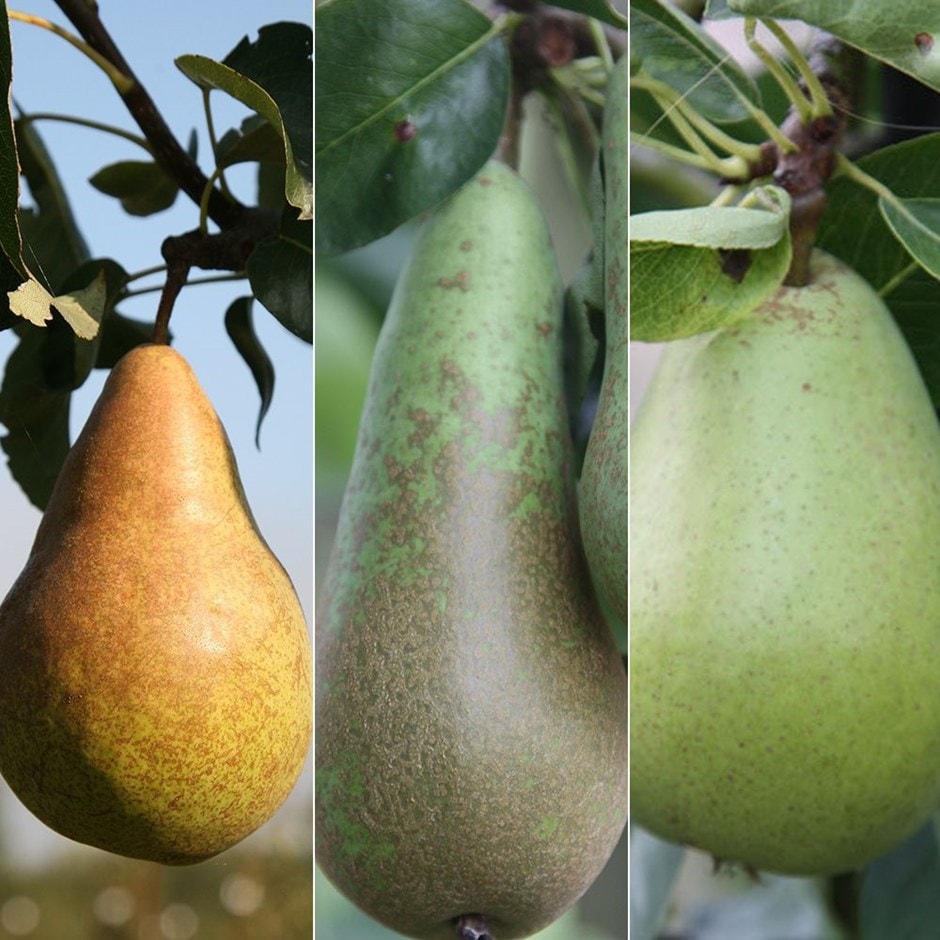pear 'Doyenné du Comice' / 'Conference' / 'Concorde'
family pear Doyenne‚ Du Comice / Conference / Concorde
- Position: full sun
- Soil: moderately fertile, moist but well-drained soil
- Rate of growth: average
- Flowering period: April
- Hardiness: fully hardy
Three different types of pears have been grafted onto this 'family' tree, which will bear a sucession of fruit from late summer to mid autumn. The chosen varieties will all cross pollinate freely, so there is no need to plant another tree nearby, making it particularly useful for smaller gardens. This tree has been grafted with the following varieties -
'Doyenné Du Comicé ' AGM - an outstanding pear, which is renowned for its flavour, texture and taste. Ready to harvest in mid October.
'Conference' AGM - the pure white flowers of this dessert pear are followed by delicious, long, yellowish green fruits in late September. A popular choice in the UK as it copes well with adverse conditions better than most.
'Concorde' AGM - a reliable cropping variety producing tasty, juicy, yellow skinned fruits late in the season. The white flowers in spring are also pretty.
Pollination information: As these trees are made up of several different varieties that can cross pollinate freely, you will not need another pollinating partner.
'Doyenné Du Comicé ' AGM - an outstanding pear, which is renowned for its flavour, texture and taste. Ready to harvest in mid October.
'Conference' AGM - the pure white flowers of this dessert pear are followed by delicious, long, yellowish green fruits in late September. A popular choice in the UK as it copes well with adverse conditions better than most.
'Concorde' AGM - a reliable cropping variety producing tasty, juicy, yellow skinned fruits late in the season. The white flowers in spring are also pretty.
When planting your pear tree, prepare a hole up to three times the diameter of its root system. Fork over the base of the pit in readiness, incorporating plenty of organic matter into the backfill and planting hole. Avoiding frozen and waterlogged soil, trees should be planted out as they arrive. If you've ordered a bare root tree, soak the roots in a bucket of water for half an hour prior to planting, or if this is not possible, they can be heeled in temporarily, covering their roots with soil, or potted up. In exposed positions, stake firmly and keep the base weed-free. Apply a balanced fertiliser in early spring to support growth and fruiting and provide regular watering during hot, dry spells. The main winter prune, avoiding frosty conditions, involves removing dead, dying, and diseased wood to create an open crown. Additionally, reduce leaders and laterals by a third to establish an airy structure without crisscrossing branches. In August, summer prune by shortening side shoots longer than 20cm (8”) back to three leaves, promoting fruit ripening and encouraging more fruit buds. Always ensure that the growth you trim feels firm to the touch. Pears naturally shed a small quantity of the developing fruits in mid summer. After this has occurred, thin out the remaining pears, leaving one pear per cluster.

